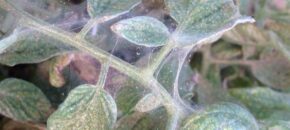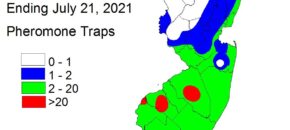
Sweet Corn European corn borer (ECB) moth catches continue to be extremely low around the state. ECB population maps will resume if second flight catches rise to high enough numbers. The highest nightly trap catches of ECB for the week ending 07/28/21 are as follows: Crosswicks 1 Matawan 1
Continue reading...

